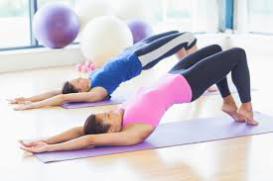Simply mentioning the word posture usually makes us sit taller or stand straighter.
However it is difficult for most of us to maintain a good posture for most of the time as our environment encourages us to slouch, lean and stand in bad positions (e.g. slouchy armchairs and badly positioned desks), placing excess strain on our bodies.
Good posture is important for a healthy back. Maintaining a good posture whenever you can throughout the day can also help to prevent neck, back and shoulder pain, as poor or unnatural postures place strain on the joints and ligaments in these areas. Poor posture can also lead to tension headaches and pain in other joints (e.g. knees).
By moving standing and sitting in better postures we can prevent these unpleasant issues and often appear taller, slimmer and fitter from a few simple changes.
Here are my tips for improving your posture:
1.Check your alignment- When you stand try to keep your hips, knees and feet inline, your weight even between your feet and your hips level with each other.
Often we point our knees slightly in or out, or tip or hips to one side when standing, try to avoid doing this!
2.Stand tall – To avoid slouching imagine a piece of string lifting your head to the ceiling when you sit or stand. This will help to prevent you from dropping your chin towards your chest, jutting your head forward or rounding your upper back. All of which we often do when slouching.
3.Maintain a neutral spine –When standing, sitting or even lying down aim to keep your back in a natural position, with your upper back fairly straight and your ribs positioned above your pelvis. There should be a small curve in your lower back.
Check you are not moving your back into un-natural positions by arching your back, jutting your hips forwards or rounding your upper back.
4.Check your shoulder placement- Cold weather, heavy bags and stressful lifestyles can cause our shoulders to become tense. This results in us holding our shoulders upwards towards our ears, or rounding them forwards.
Aim to draw your shoulders “back and down” and imagine your shoulder blades drawing closer together across your upper back. Simple exercises such as shoulder rolls, shoulder shrugs or arm circles can also help to relieve shoulder tension. Pay attention to your shoulder position throughout the day and perform these movements if you notice your shoulders feeling tense.
Paying attention to these posture points though out the day can make a big difference especially if you have suffered from back, neck or shoulder pain in the past.
Try thinking of your posture when you are working at a desk, driving, commuting or carrying items for the best effects.



